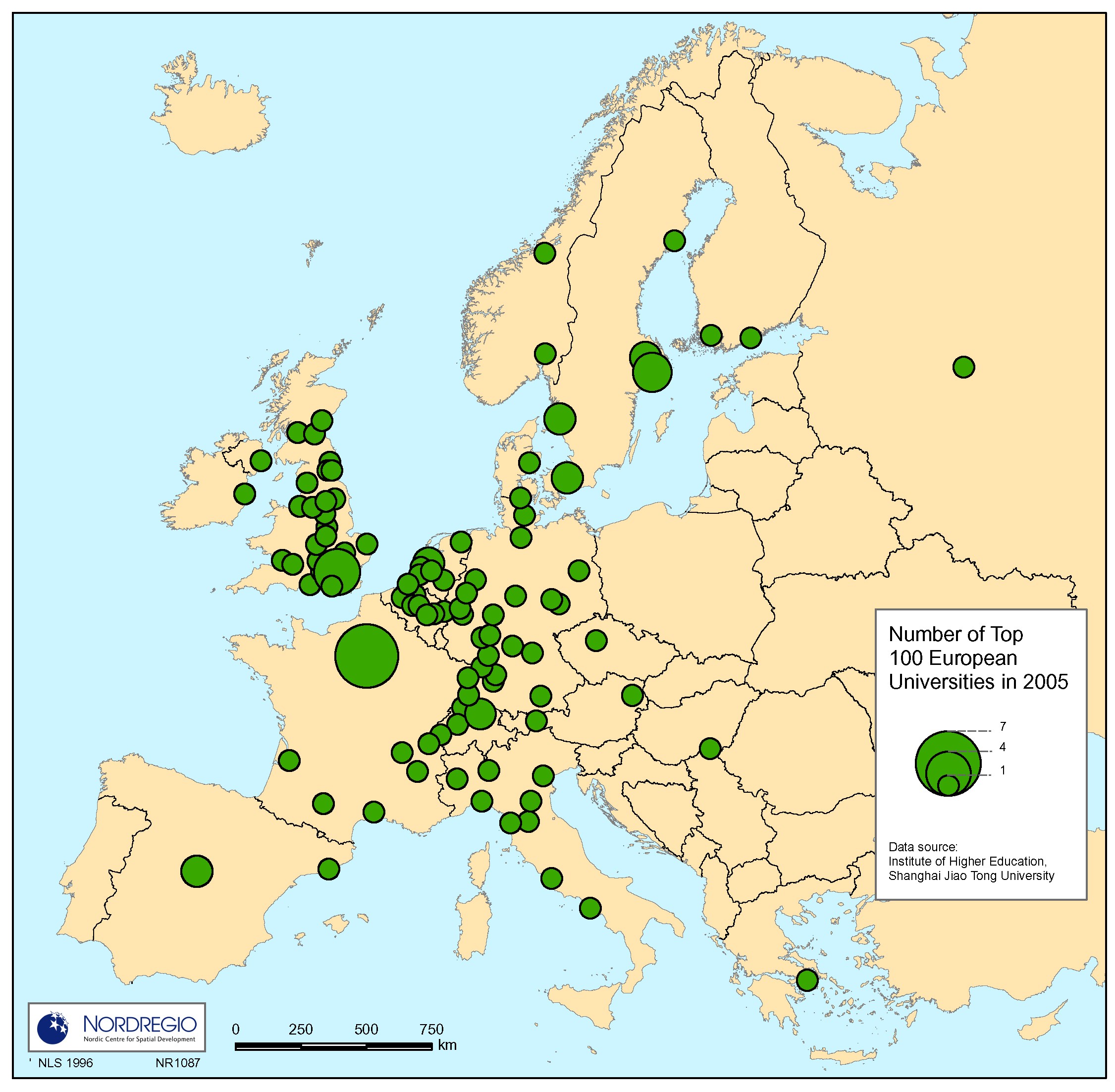Currently some 54% of all R&D funding in the EU stems from private sources, i.e. largely outside the academic field. Indeed, there is strong pressure on universities to more actively seek financing from the private sector.
More generally, universities are being challenged to contirbute more to local and regional development. This does not imply that universities are necessarily seen as significant suppliers to the local workforce, but that the societal and local/regional effects of their work have to be taken into account. This mission is often labelled as the "third task" of universities.
- In this respect, universities have a dual role in the knowledge economy, both as suppliers of raw material to the labour market and as producers of knowledge, explain Hanell and Neubauer.
Historically, universities have been the main, and indeed often the only, milieus for science and innovation. In the last thirty to forty years the substantial rise in corporate and/or other private sector research has however seen a steady loosening of the formerly umbilical ties between universities and the local or national economy.
- Nevertheless, universities continue to carry out important research tasks in the fields of technology and medicine, as well as in so-called 'primary' or 'basic' research, a prerequisite for truly new and innovative thinking, the two researchers underline.
Although there are universities in virtually every corner of the European continent, the location of highly ranked universities is, by and large, a matter for the Pentagon. Of those 100 ranked highest in Europe, nearly a third (30) are in the UK, nearly a fourth (23) in Germany and 13 in France, followed by nine in Italy, the Netherlands and Sweden respectively.
Of the larger European countries, Russia, Poland and Spain are clearly underrepresented, and more generally, Eastern Europe in its entirety is virtually void in this respect. Globally however, most leading universities are located outside Europe, primarily in North America.
On the city level, Paris, with seven universities, and London, also boasting numerous universities and other tertiary educational establishments (in the top 100-list) remain outstanding European academic centres.
In Sweden many of the largest
universities (e.g. Uppsala or Lund) are located outside the major cities of Stockholm, Gothenburg and Malmö. In Norway, which has a rather centralised university system in comparison with e.g. Sweden or Finland, the position of Oslo predominates.
– From a Nordic point of view, the authors note, Copenhagen is in this respect the primary academic milieu, being particularly vigorous in medical sciences publications.

Leading university cities of Europe 2005.
By Tomas Hanell and Jörg Neubauer
Preliminary data: DK, EE, FR, GR, NL. Eurostat estimates: AT, DE, SI. Data for 2003: CH, CN, GR, IT, JP, LU, NO, PT, UK, US. Data source: Eurostat, OECD